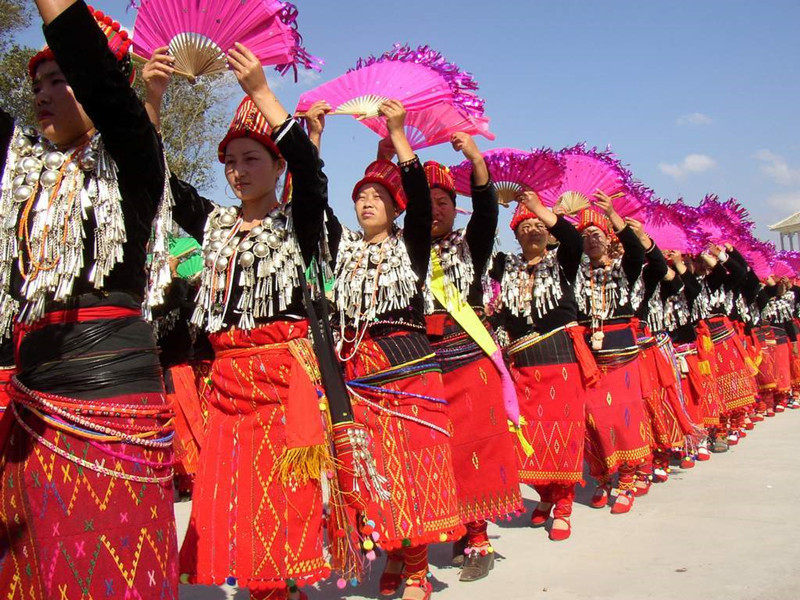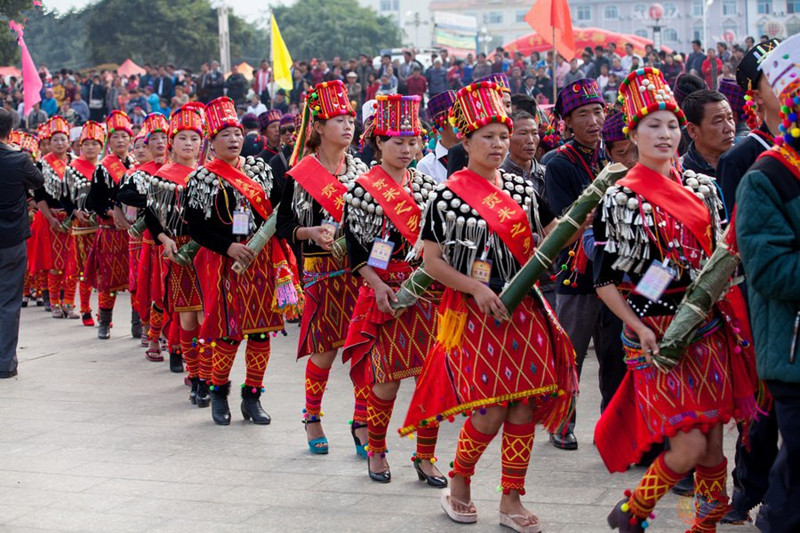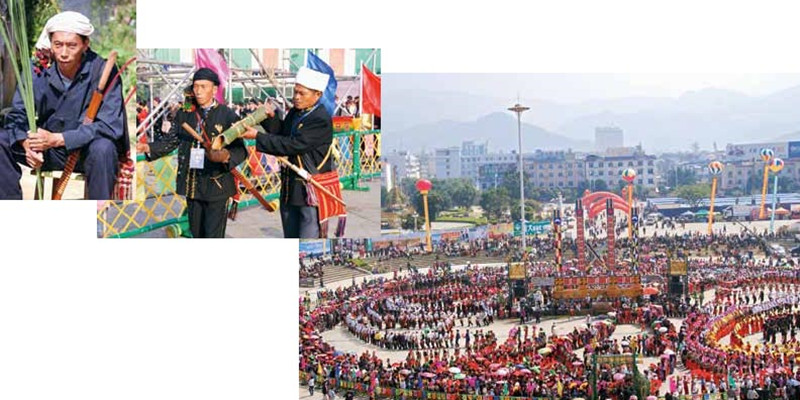
Jingpo Ethnic Minority
Jingpo ethnic group, one of China’s 55 ethnic minorities, has its own language and script. The language belongs to Tibeto-burman language family of Sino-Tibetan language family. The written language of Jingpo is alphabetic writing based on the Latin alphabet. After 1949, with the help of the government, the Jingpo people have started publishing newspapers, periodicals and books in their own language.
Distribution
The origin of Jingpo ethnic minority is related to the ancient Diqiang people on the Qinghai-Tibet plateau. There are five branches of Jingpo ethnic group, namely, Jingpo, Zaiwa(载瓦), Lechi(勒赤), Lang E(浪峨) and Bola(波拉). Jingpo people live mainly in the mountainous area of Dehong Dai and Jingpo autonomous prefecture of Yunnan province, and a few live in the border area of Nujiang Lisu autonomous prefecture and Kachin state of Myanmar.
Culture Heritages of Jingpo Ethnic Minority
Munao Zaiwa- Epic of Jingpo Minority Hulusi ( Cucurbit Flute) Sword Dance of Jingpo Minority Sword Playing (Shuadao) of Jingpo minority Inheritors
Le Paidang He Weimin Bao Lekuang Shi Mading Yue Matong
Festivals of Jingpo Ethnic Minority
Ethnic traditional festivals of Jingpo ethnic minority mainly include Munaozongge festival, Nengxian festival(能仙节), new rice festival and the like, among which Munaozongge festival is the grandest one.
New Rice Festival (Xinmijie) Girls’ Festival (Guniangjie/Nengxianjie) Munaozongge Festival of Jingpo Minority

 7 Days GolfingTour
7 Days GolfingTour
 8 Days Group Tour
8 Days Group Tour
 8 Days Yunnan Tour
8 Days Yunnan Tour
 7 Days Shangri La Hiking
7 Days Shangri La Hiking
 11 Days Yunnan Tour
11 Days Yunnan Tour
 6 Days Yuanyang Terraces
6 Days Yuanyang Terraces
 11 Days Yunnan Tour
11 Days Yunnan Tour
 8 Days South Yunnan
8 Days South Yunnan
 7 Days Tea Tour
7 Days Tea Tour
 8 Days Muslim Tour
8 Days Muslim Tour
 12 Days Self-Driving
12 Days Self-Driving
 4 Days Haba Climbing
4 Days Haba Climbing
 Tiger Leaping Gorge
Tiger Leaping Gorge
 Stone Forest
Stone Forest
 Yunnan-Tibet
Yunnan-Tibet
 Hani Rice Terraces
Hani Rice Terraces
 Kunming
Kunming
 Lijiang
Lijiang
 Shangri-la
Shangri-la
 Dali
Dali
 XishuangBanna
XishuangBanna
 Honghe
Honghe
 Kunming
Kunming
 Lijiang
Lijiang
 Shangri-la
Shangri-la
 Yuanyang Rice Terraces
Yuanyang Rice Terraces
 Nujiang
Nujiang
 XishuangBanna
XishuangBanna
 Spring City Golf
Spring City Golf
 Snow Mountain Golf
Snow Mountain Golf
 Stone Mountain Golf
Stone Mountain Golf














